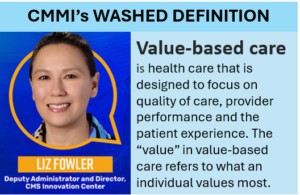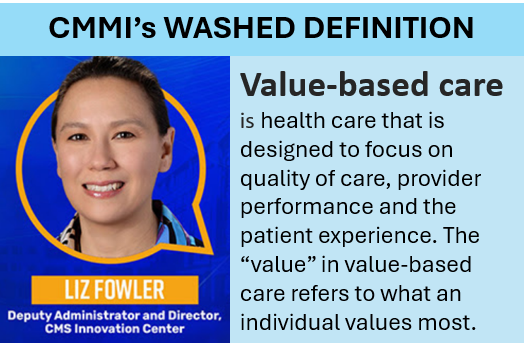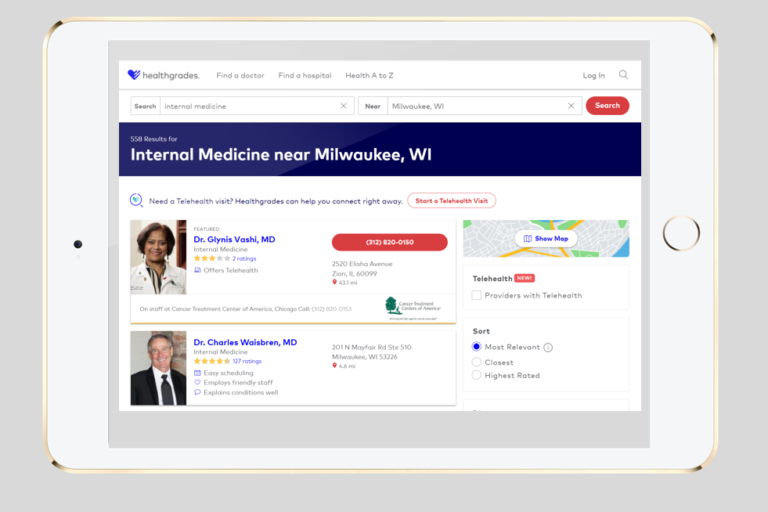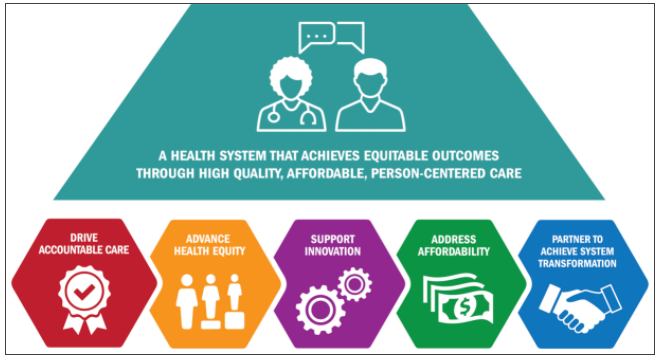I went to the huge HIMSS’11 convention in Las Vegas a few weeks ago. When visiting the bewildering number of vendor booths, I focused on a few key questions relevant to the challenges facing physicians and hospitals working to establish successful Accountable Care Organizations (ACOs):
1) What is the current state of clinical data exchange between Electronic Health Record (EHR) systems primarily used for acute hospital care vs. ambulatory care?
2) Do leading EHR systems have useful “registry” capabilities?

I have been hearing from many clinical leaders that the most popular EHR systems still do not support real clinical integration across settings, and are still weak in terms of the “population management” and clinical process improvement features that are present in existing chronic disease registry applications. I was hoping to learn that these concerns were really based on a lack on familiarity with how to configure and use EHR systems, rather than any inadequacies of the systems themselves. After all, clinical message and clinical document standards have been around for years, and population management features were prominently identified in recent Meaningful Use incentives.
The verdict?
Some progress has been made in leading EHR systems, but clinical integration across settings and population management are still major weaknesses.
But why?
It turns out that both problems are related to the same underlying issue: failure to appreciate the importance of “actively structured” information.
Health Information Technology (HIT) leaders have for decades focused primarily on a vision of computerizing health information, going paperless, and improving the access to that information by many members of the clinical team across settings. To reduce the burden of capturing information that can be displayed on a computer screen, HIT vendors have developed document imaging, optical character recognition, and voice recognition technology. And, they have created clinical documentation systems that allow the user to enter simple codes to insert blocks of text into their notes quickly. Over the last 15 years, most HIT leaders have recognized that there is some value in “structured data” — health information in the form of codes that computers can interpret rather than just display. In response to this recognition, EHR vendors have added “template charting” features that allow users to do exception editing of some coded values in notes. They have developed sophisticated systems to interpret the meaning of textual information and convert that text into structured data. And, they have created messaging standards that allow orders, clinical documents (notes) and continuity of care information to be shared across systems and care providers.
But, the problem that remains is that the structured data that is being captured and exchanged is “passively structured.” Although the current crop of EHR systems may allow some of the health information to be represented with codes, the EHR tools and the care process itself do not assure the capture and transmission of particular pieces of information required to support particular down-stream uses of the data, such as reminders, alerts, quality and performance metrics, and comparative effectiveness studies. The clinical leaders that are focused on improving care processes, and the health services researchers that are trying to measure performance and comparative effectiveness are well aware that missing data is crippling to the usefulness of passively structured data. The real care process improvement and performance and effectiveness measurement efforts of Accountable Care Organizations requires “actively structured” health information. To assure the completeness of the information, they use “registry” applications, questionnaires, and data collection forms. And, they transmit this information in formats that rigorously enforce the meaning and completeness of the structured information. The objective is not to capture as much structured data as possible. The objective is to assure the accuracy and completeness of particular data elements that you are relying on for specific, strategically important purposes.
I believe that HIT professionals may be reluctant to make actively structured information a requirement because (1) they lack expertise and familiarity with the downstream uses of the data for care process improvement and measurement, and (2) they are concerned that the added burden of actively structured data capture on end-user clinicians may further worsen their problems with “clinical adoption” of their technology. They are attracted to solutions that extract passively structured information from clinical notes, such as voice-recognition and “clinical language understanding” (CLU). And they don’t realize that the big pile of passively structured data output by such solutions will fail to meet the requirements of Accountable Care Organizations.
To solve the problem, two main things are necessary:
- Refocus the design objectives of EHR products on the strategic goals of Accountable Care, rather than on the tactical goals of reducing medical records cost, “going paperless” or reducing security risks. The biggest implication of this will be the integration of analytic and care process management functionality into EHRs, rather than viewing those as separate solutions to different problems.
- Create stronger organizational linkages between HIT professionals, the clinical leaders involved in care process improvement and the epidemiologists and biostatisticians that have the expertise to measure provider performance and treatment effectiveness. Many hospitals, physician organizations and nascent ACOs are attempting to do this by hiring “chief medical informatics officers” (CMIOs). But that will only solve this problem if the new CMIOs can bridge between HIT, process improvement and measurement disciplines. If the CMIO role is viewed more narrowly as a liason between HIT professionals and front line clinician users, the focus will continue to be on unstructured or passively structured data to reduce barriers to HIT adoption.


















2 thoughts on “Why many clinical leaders prefer Registries to EHRs: Actively Structured Information”
Dr. Ward–Your comments regarding actively structuring HI data is spot on. I’ve been of the same persuasion for all the same reasons. Do you have plans to travel to or through the St. Louis area in the next several weeks. I would be honored to meet with you and discuss your impressions further (and briefly)! Lanny Turner, M.D.
Pingback: Microsoft’s purchase of Nuance is not a bold move, despite the $16B price. My advice to Mr. Nadella is to avoid shiny objects and to not avoid process change. – Reward Health